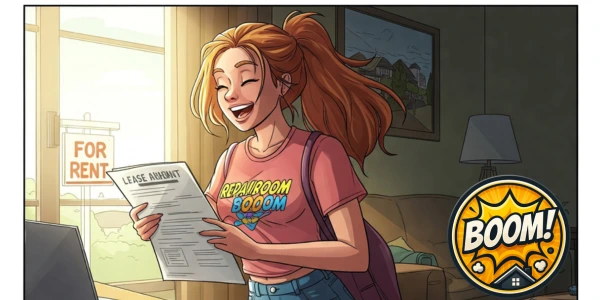What Your Landlord is Really Looking For During a Move-Out Inspection
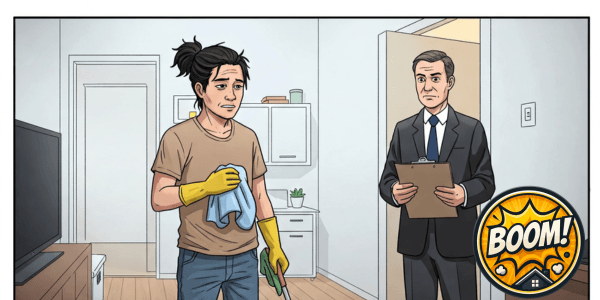
- What Your Landlord is Really Looking For During a Move-Out Inspection
- Introduction – Moving Out
- Understanding California Security Deposit Law (Civil Code § 1950.5)
- The #1 Factor Landlords Look For: Cleaning, Cleaning, CLEANING
- Key Areas Landlords Always Check (and Tenants All Too Commonly Miss)
- Beyond Cleaning: Other Common Move-Out Charges & Unit Condition
- Your Best Defense: Preparation and Documentation
- Conclusion – Moving out
- FAQ – What Your Landlord is really looking for
Introduction – Moving Out
Moving out marks the end of a lease and the hopeful return of your security deposit. But after you’ve packed and cleaned, what exactly is your property manager or landlord looking for during that final walk-through? Understanding their perspective – what they focus on and what commonly gets missed – is key to getting your deposit back. We’ll give you the inside scoop, including some surprising statistics from real student move-outs in a busy California college town, and touch on California law.
During a recent student turnover period in Isla Vista, California, 133 move-out inspections were completed by a local property management company. Out of those 133 move-outs, only 6 tenants received their security deposit in its entirety. That means a staggering ~95.5% of tenants had deductions from their deposit.
This isn’t just an Isla Vista trend. Data suggests significant deductions are common elsewhere too. While the average security deposit taken in this area was around $5200, the average amount returned was closer to $3488, meaning tenants on average saw deductions of approximately $1712.
Shockingly, this high percentage of deductions is drastically more common than you may think, and it primarily comes down to a few key factors that tenants often overlook. While tenants may sometimes perceive deductions as arbitrary, property managers and landlords are bound by legal standards. Specifically, California Civil Code § 1950.5(g) requires that if any amount is deducted from the security deposit, the landlord must furnish the tenant with a detailed, itemized statement listing the charges for cleaning and repairs (beyond normal wear and tear). This statement, often accompanied by invoices or receipts for costs exceeding $125, serves as a legally required justification for each deduction, ensuring transparency rather than an arbitrary retention of funds.
Understanding California Security Deposit Law (Civil Code § 1950.5)
In California, Civil Code § 1950.5 governs residential security deposits. This law is crucial to understanding what landlords can and cannot charge for:
- Timeframe for Return: A landlord has 21 calendar days after you have fully vacated the premises and returned all the keys to either return your full security deposit or mail/personally deliver an itemized statement of deductions along with the return of any remaining deposit.
- Permissible Deductions: Under California law, a landlord can only deduct from the security deposit for four specific reasons:
- Unpaid rent.
- Cleaning necessary to return the unit to the same level of cleanliness it was in at the beginning of the tenancy (minus normal wear and tear).
- Repair of damages caused by the tenant (beyond normal wear and tear).
- If the lease allows, the cost of restoring furnishing items to their condition at the start of the tenancy (minus normal wear and tear).
This law emphasizes “normal wear and tear.” Landlords cannot charge for wear and tear that occurs with ordinary, reasonable use of the property. For example, property managers know that paint has a lifecycle. Landlords cannot charge to repaint walls simply because the paint has aged or has minor, unavoidable scuffs from ordinary use over time. Similarly, with carpets, mildly worn pathways in high-traffic areas or slight fading from age would be considered normal wear and tear.
However, landlords can deduct from the deposit for damages that go beyond this. For carpets, this could include significant stains (like pet urine, wine spills, paint), burns, rips, tears, or excessive soiling requiring deep restoration. Likewise, they can charge if the paint is damaged significantly (large scuffs, numerous or large holes, stains) beyond typical wear.
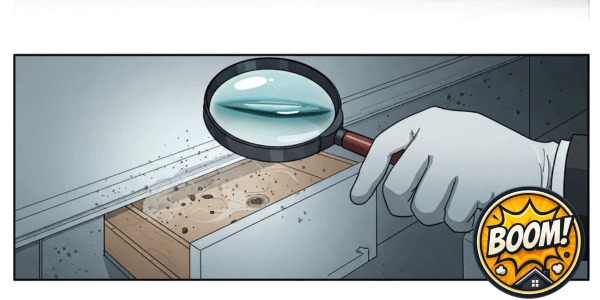
The #1 Factor Landlords Look For: Cleaning, Cleaning, CLEANING
When it comes to security deposit deductions, insufficient cleaning is consistently the single biggest factor after unpaid rent. Tenants often underestimate the standard of cleanliness required at move-out, leading to costly deductions. It’s not just about tidying up; landlords typically expect a professional cleaning standard to ensure the unit is truly move-in ready for the next occupant.
So, how do you ensure you meet your specific landlord’s or property manager’s standard? Don’t guess – communicate! Proactively ask what their expectations are. Even better, take advantage of the opportunity to schedule a pre-move-out inspection. This walk-through allows your landlord or property manager to point out specific areas needing attention before your final move-out day, giving you clear direction.
Surprisingly, pre-move-out inspections are not mandatory, and only about 46% of residents schedule one. By skipping this crucial step, many tenants inadvertently set themselves up for failure, missing the chance to clarify expectations and avoid potential disputes later.
Even if you hire professional cleaners, armed with information from your landlord or your pre-move-out inspection, you can guide them to meet the precise requirements. It’s common for property managers to require corrections even after a professional service if their specific standards weren’t met initially.
Failing to meet these standards can significantly impact your deposit return. Move-out cleaning costs can escalate quickly, particularly for larger units or in high-cost areas like nearby Isla Vista, where professional cleaning might range from $400 to $1000. Common, expensive deductions often include charges for deep cleaning carpets or ensuring specialized flooring like vinyl plank is returned to pristine condition. Taking the time to understand and meet the specific cleaning requirements through communication and a pre-move-out inspection is your best defense against these deductions.
Key Areas Landlords Always Check (and Tenants All Too Commonly Miss)
Property managers focus heavily on areas that are frequently overlooked by tenants during their final clean, leading to deductions for move out cleaning. Pay extra attention to these spots during your final rental move out cleaning checklist:
- Dusty Blinds: Dust accumulates easily and is often missed. Wipe down each slat thoroughly.
- Dirty Windows, Tracks, and Sills: Inside and out if accessible. Window tracks collect significant dirt and debris.
- Baseboards: Baseboards are dust magnets. Wipe them down throughout the unit.
- Inside Appliances: Don’t just clean the outside. Landlords check inside the refrigerator, freezer (including seals!), and the oven.
- Stove Top & Oven Details: Pay special attention to the inside of the oven, the drip pans (clean or replace if heavily soiled), and the grease splatters that inevitably get behind the stove. Pull the stove out to clean the floor and wall behind it if possible.
- Toilet Base and Tank: Clean thoroughly around the base of the toilet and the often-forgotten area between the toilet seat and the tank.
- Inside Cabinets and Drawers: This is a frequently missed spot! Ensure the insides of all kitchen and bathroom cabinets and drawers are wiped clean of crumbs, dust, and any spills. Crucially, make sure they are completely empty!
Below in a gallery are some common areas I see missed during move-out inspections that are an easy clean.
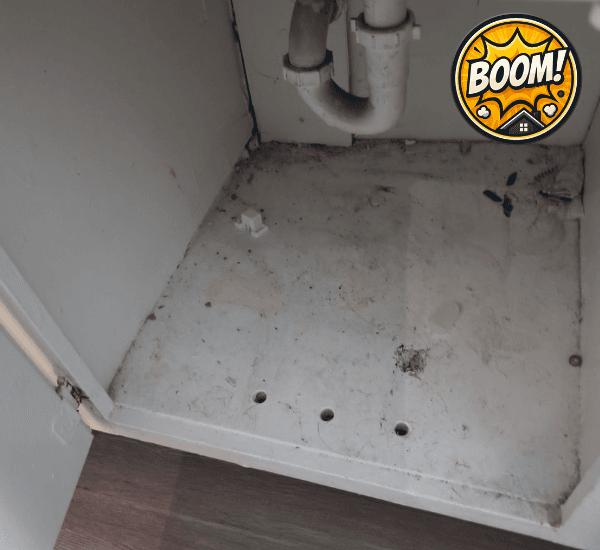
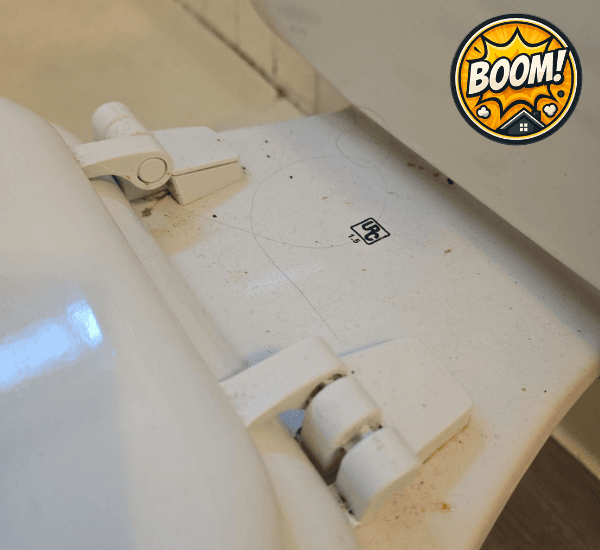
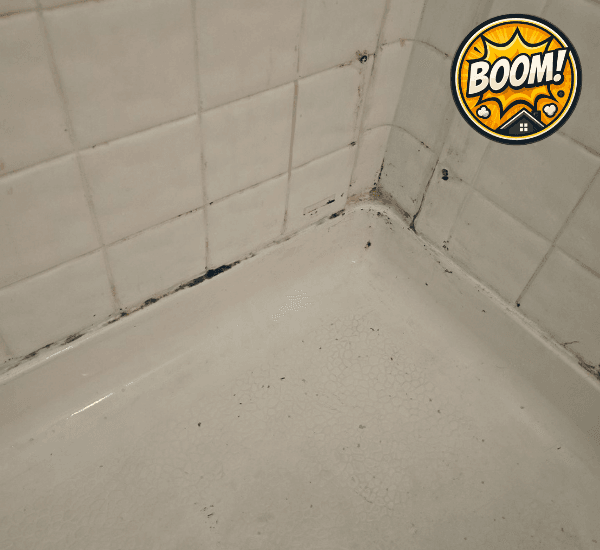
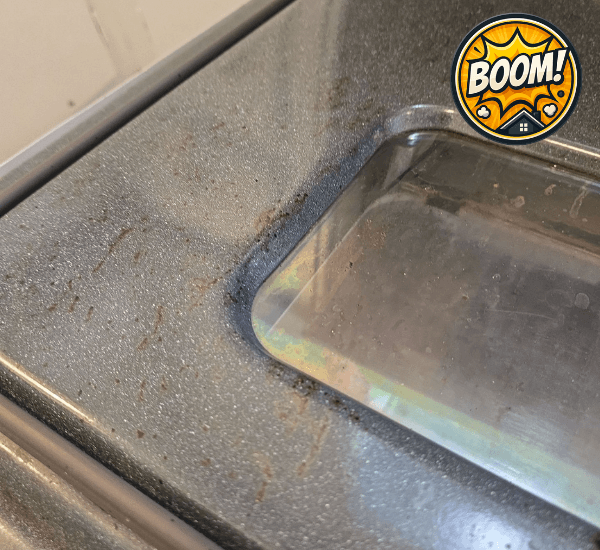
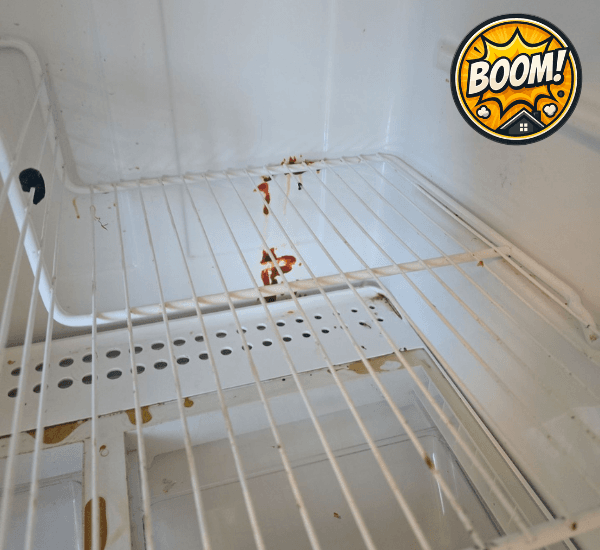
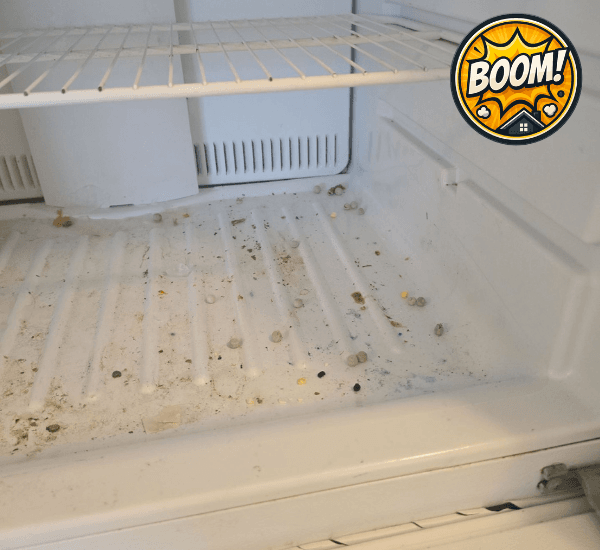
Beyond Cleaning: Other Common Move-Out Charges & Unit Condition
While cleaning is the biggest factor, other damages, forgotten items, and unit modifications frequently result in deductions:
- Missing or Cracked Outlet & Switch Covers: These are so unbelievably cheap from any hardware store like Home Depot or Amazon (often under $1-$2 each!), yet they are one of the most commonly charged items if cracked or missing. Do a final walk-through and check every single one. Replace any cracked or missing covers yourself – it’s far cheaper than the landlord’s charge.
- Missing Keys and Passes: Did you leave or return all copies of your unit keys, parking passes, and mailbox keys? Some property managers will charge a fee for unreturned or missing keys and passes. Ensure all are accounted for and returned as instructed.
- Fixtures and Hardware: Ensure things like towel bars and toilet paper holders are still installed and tight. If you replaced the original shower head or any other fixture (like light fixtures, doorknobs), ensure you put the original ones back and that the original hardware is undamaged and properly re-installed.
- Damage from Hanging Items: Holes in walls from hanging TVs, photos, flags, banners, etc., are considered damage beyond normal wear and tear. You must patch the holes and fill them properly, attempting to match the wall texture and paint if possible. Ensure shelves or other items you installed are also removed cleanly. If you made other modifications to the unit, ensure it’s returned back to its original condition unless you had specific written permission otherwise.
Your Best Defense: Preparation and Documentation
To avoid being part of the statistic of tenants losing their deposit, preparation is key:
- Perform a Deep Clean: Go beyond a surface clean. Use a detailed move out cleaning checklist rental. Address all the commonly missed areas listed above.
- Schedule a Pre-Move-Out Inspection: It’s HUGELY important to schedule a pre move out inspection with the property management company. In California, landlords must notify you of your right to request this inspection, and it must be scheduled no earlier than two weeks before the end of your tenancy. Aim to schedule this walk-through for a time within those final two weeks, ideally after you’ve done most of your packing but before you complete your final, detailed cleaning. This timing allows the landlord or their agent to point out required cleaning and repair tasks based on the current state, giving you a clear list of what needs to be fixed or cleaned to meet their standards before the final inspection. Come prepared for the inspection: bring your copy of the Move-In Condition Report to reference the unit’s original state, and have a notepad or your phone ready to take detailed notes on everything discussed. This proactive step is the single best way to understand expectations and minimize potential deposit deductions.
- Leverage Your Move-In Report: Refer back to your [ Move-In Condition Report]. This documents the property’s condition when you moved in and is crucial proof that certain damages or cleaning issues were pre-existing, not your responsibility.
- Document Your Move-Out: Take extensive photos and videos after you have completely moved out and finished cleaning, but before you hand over the keys. This provides evidence of the condition you left the unit in.
- Know Your Rights: Understand what landlords can legally deduct for (damage beyond normal wear and tear, cleaning needed to restore to move-in condition) under California law. Learn more about your rights, including how to dispute unfair charges, in our guide on [ How to File a Complaint Against a Landlord]. Remember that patching holes rental move out is usually your responsibility, as outlined in our [How To Patch Wall Holes in 3 Easy Steps]. Consult your [ Renter Move-Out Checklist] for a complete list of tasks.
Conclusion – Moving out
While the statistic of deposits returned in full is low, especially in high-turnover markets like Isla Vista, it’s often not due to malicious intent but rather the documented cost of cleaning and repairs needed to return the unit to a rentable state, permissible under California security deposit law. Your landlord’s move out expectations heavily center on detailed cleaning, especially in commonly missed spots like inside cabinets and drawers, addressing damages beyond normal wear and tear (like significant paint damage or holes from hanging items), ensuring fixtures are secure, and accounting for minor items like missing outlet covers and keys.
By focusing on a thorough clean, understanding what landlords look for move out, using your Move-In Condition Report, taking your own move-out documentation, and particularly by scheduling that crucial pre-move-out inspection, you drastically increase your chances of getting your security deposit cleaning funds returned, averaging over $1700 for many tenants in California.
FAQ – What Your Landlord is really looking for
Why do most renters lose part of their security deposit after moving out?
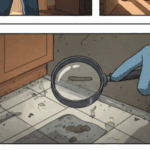
Besides unpaid rent, the most common reason renters face security deposit deductions is insufficient cleaning. Landlords typically expect a professional standard of cleanliness, and tenants often overlook key areas like the inside of appliances (oven, fridge), dusty blinds, dirty window tracks, baseboards, and inside cabinets/drawers, leading to cleaning charges
What’s the difference between “normal wear and tear” and damage a landlord can charge for in California?
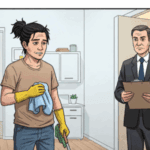
Normal wear and tear refers to the expected minor decline from ordinary use over time (e.g., lightly worn carpet paths, minor paint scuffs) and cannot be deducted from your security deposit under California Civil Code § 1950.5. Damage includes significant issues caused by the tenant beyond normal use (e.g., large stains, burns, wall holes, broken fixtures) which can be deducted.
Do I have to patch small nail holes from pictures before moving out in California?
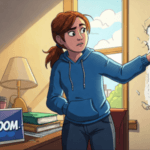
Generally, yes. The article indicates that holes in walls from hanging items (like pictures or TVs) are usually considered damage beyond normal wear and tear in California rentals. Tenants are typically responsible for properly patching these holes to avoid deductions from their security deposit for wall repairs.
How long does my California landlord have to return my security deposit or explain deductions?
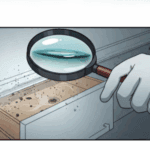
According to California Civil Code § 1950.5, your landlord has 21 calendar days after you have completely vacated the property and returned all keys. Within this timeframe, they must either return your full deposit OR provide an itemized statement detailing any deductions for valid reasons (unpaid rent, cleaning, damages beyond normal wear) along with any remaining deposit balance.
What is the single best way to avoid surprise cleaning or repair charges when moving out?

The article strongly recommends scheduling and attending a pre-move-out inspection with your landlord or property manager. California law requires landlords to notify tenants of this right. This inspection, done within the final two weeks of tenancy, allows the landlord to point out specific issues, giving you a clear list of what needs attention to meet their standards and avoid security deposit deductions.
Besides major cleaning, what small, often overlooked items can lead to move-out charges?
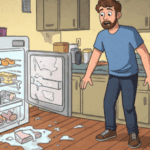
Landlords frequently charge for small items tenants miss. Pay attention to missing or cracked outlet/switch covers (cheap to replace yourself!), ensuring all keys (unit, mail, parking passes) are returned, checking that fixtures like towel bars are secure, and verifying that the insides of all cabinets and drawers are completely empty and wiped clean
Disclaimer: This article provides general information based on common practices and specific data shared, and touches on California law (Civil Code § 1950.5). Landlord-tenant laws and specific charges vary by location and lease terms, and laws can change. Consult your specific lease agreement and local/state laws for definitive legal information regarding move-out inspections and security deposits in your jurisdiction. This is not a substitute for legal advice from a qualified attorney.

How to replace a smoke alarm battery | Free Guide – RepairBoom
How to unclog a drain in 4 easy steps | Free Guide – RepairBoom
How To Fix A Sliding Closet Door In 3 Easy Steps
How to Get Your Security Deposit Back After Moving Out: In 4 Easy Steps


